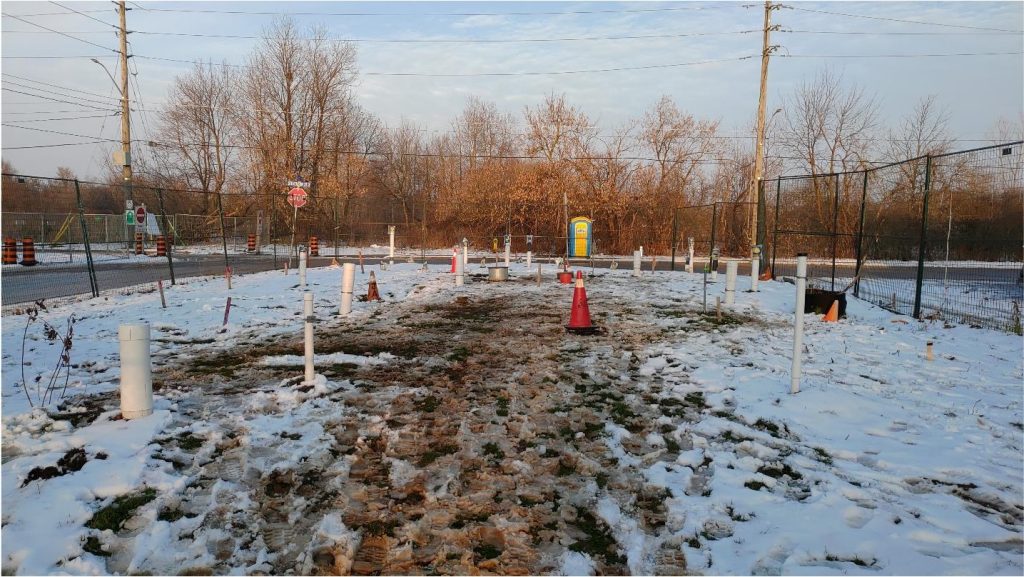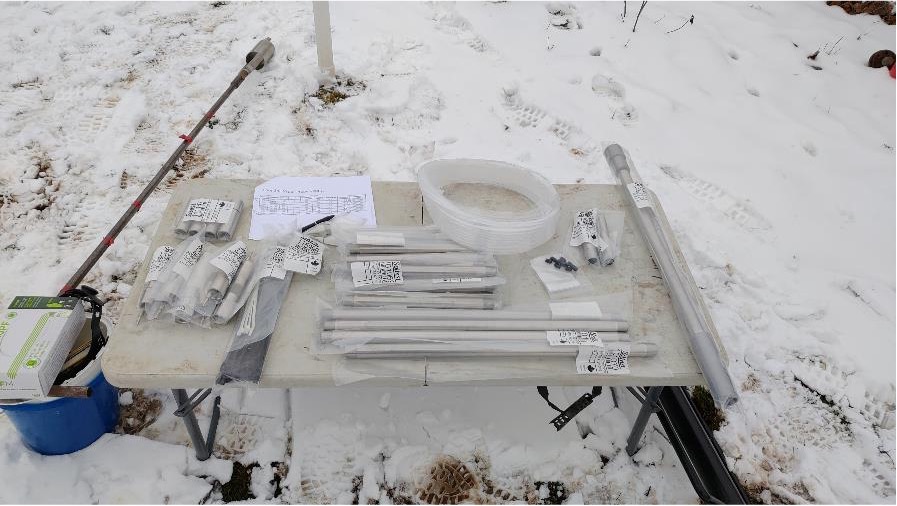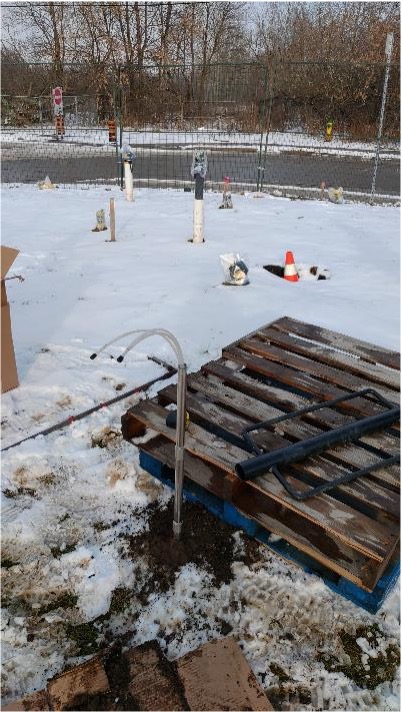High-Res Groundwater Monitoring Tracks its Success
Over 40 years ago, a former industrial site in the City of Guelph, Ontario, was contaminated by toluene; the chemical plume has since leached into the underlying fractured bedrock aquifer. Today, the site is home to a unique research project headed by the University of Guelph Morwick G360 Groundwater Research Institute.
Testing Phytoextraction
The study is evaluating the use of trees as a viable tool for cleaning up the contamination. The project began in 2008 with the planting of 51 hybrid poplar trees. The poplar trees tested the process of phytoextraction – where trees take up the contamination by pulling it in water through their roots and out into the atmosphere.
Toluene concentrations were measured in samples of sap taken from the trees. This provided evidence that poplars were actively extracting toluene from the shallow fractured bedrock system. In addition, core samples from the tree stems showed microorganisms in the trees themselves had the ability to break down toluene.
High-Resolution Monitoring
To monitor the subsurface during the study, multilevel groundwater monitoring wells were installed across the 220-metre squared site.

A multilevel system is an instrument that allows the monitoring of several discrete groundwater zones within a single borehole. The system typically consists of seals and ports, which are placed at varying depths, effectively isolating, and providing access to each monitoring interval.
The multilevel wells are used to take groundwater level measurements and samples from several depths to track the contaminant concentrations in groundwater. Vapour sampling is also taking place using monitoring ports in the vadose zone.
Results from the subsurface measurements show that bioremediation is occurring in the groundwater and in the vadose zone, which is being enhanced by the trees.
Phytoremediation Study Continued
After the poplar trees were removed in 2020, 120 willow trees were planted at the site to begin the next stage of the study. The willow trees will also test the effectiveness of the bioremediation process called phytoremediation.
Phytoremediation occurs when trees interact with the soil to produce microorganisms that aid bioremediation. These microorganisms naturally break down the chemicals into non-harmful compounds.
Other recent additions to the study site are two Solinst Model 615ML Multilevel Drive-Point Piezometers. The Drive-Point Piezometers will be used for multilevel soil vapour sampling.
The 615ML Multilevel Drive-Point Piezometer has stainless steel monitoring ports connected using 3/4" NPT steel drive pipe and couplings. Dual barb stems allow the connection tubing to create up to 3 or 6 monitoring zones, depending on tubing size.
Steven Chapman, Senior Research Engineer/Hydrogeologist with the G360 Team, oversaw the installation of the Multilevel Piezometers. He noted that the “installations went smoothly”. The Drive-Points consist of 3 sampling ports each and are installed to depths of ~2.2 to 2.5 meters.

The Drive-Points were installed in overburden with the aid of a manual slide hammer. The site was previously excavated and backfilled with clean sand fill, so the conditions were right for a shallow drive-point installation. The Multilevel Drive-Points haven’t been used for sampling yet, but Steven says, “I’m confident we’ll get good data.”
In the meantime, the G360 Team (including Steven’s son, Junior Field Technician/Engineer Bradley Chapman) have been taking water level measurements and samples, as well as soil vapour samples from the uppermost ports of some of the CMT Multilevel Systems that are above the water table.
Over the next few years, the study team will continue using the multilevel wells and drive-points to monitor the plant-assisted toluene attenuation process.
With thousands of contaminated locations across Canada, researchers hope that the knowledge gained through this study can be applied to other sites and get them back to a safe, usable condition.
Phytoremediation is a slow but natural approach, which may be ideal in some conditions. But, perhaps combined with other more aggressive remediation methods, phytoremediation could be a very viable option for toluene contaminated sites.
Read more about the project in this article by Guelph Today’s Ariel Deutschmann: U of G project seeing how trees can clean up contaminated sites
Also, more on the project can be learned on the Morwick G360 site: Evaluation of Phytoremediation System in Ontario (NSERC Alice CRD)

